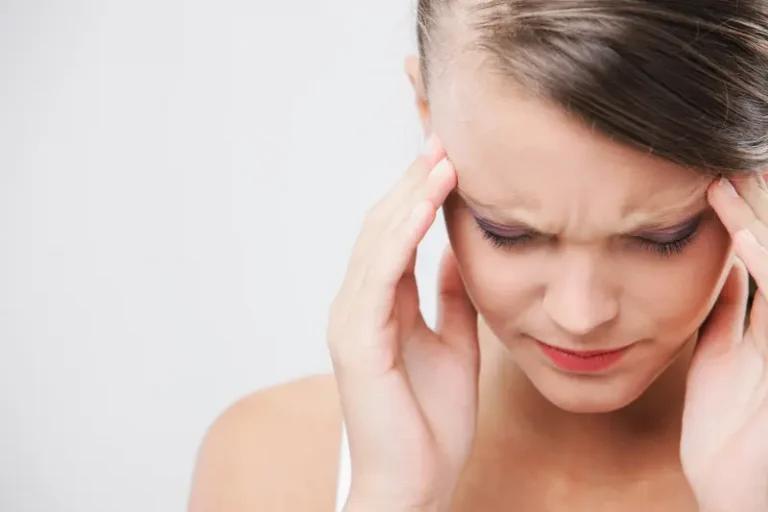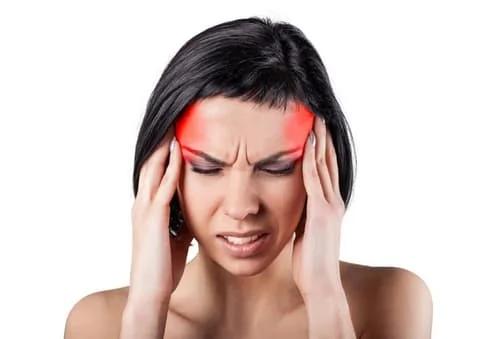Migraines
Get valuable insights into Migraines, including its causes, symptoms, prevention strategies, and treatment options, while also learning about how you can lower the cost of the medications used to treat Migraines.
MEDICAL INFORMATION
Migraines Key Facts
Related Medications
What is the clinical definition of migraines?
Migraines are a type of neurological disorder characterised by recurrent, severe headaches that can last for hours or days. There are two main types of migraines: those with aura (visual disturbances) and those without aura. Diagnostic criteria for migraines include the presence of at least five attacks lasting 4-72 hours, with symptoms such as pulsing or throbbing migraine pain on one side of the head, sensitivity to light and/or sound, nausea/vomiting, and more.
Differential diagnosis is important in diagnosing migraines because other disorders such as tension-type headaches or cluster headaches can present similar symptoms. It’s crucial to rule out other potential causes before confirming a migraine diagnosis.
What is the pathophysiology of migraines?
Migraines are a complex neurological disorder with multiple pathophysiological mechanisms involved. One of the primary neurotransmitters involved in migraine pathophysiology is serotonin, which regulates pain and inflammation pathways in the brain. Additionally, genetics plays a role in migraine susceptibility, as certain genes have been identified as risk factors for developing this disorder.
Migraines are associated with serotonin, genetics, and various triggers such as sleep patterns and hormonal fluctuations.
Triggers can activate a migraine attack and include changes in sleep patterns, hormonal fluctuations, stress levels, environmental factors such as weather changes or bright lights. Understanding these triggers and managing them has become an essential part of preventing attacks from occurring.
How long do migraines typically last?
Migraines can last anywhere from a few hours to several days. The duration of a migraine can vary depending on the severity of the headache, the frequency of the attacks, and the individual’s response to treatment. In some cases, a migraine aura (visual or sensory disturbances that can occur before or during a migraine) can last up to an hour. It is important for individuals who experience migraines to keep track of their symptoms and work with their healthcare provider to develop a personalized treatment plan.
What are the risk factors and causes of migraines?
Causes
Migraines are a complex condition with various potential triggers, and their exact cause is not fully understood. However, they are believed to be the result of abnormal brain activity affecting nerve signals, chemicals, and blood vessels in the brain. Here are some factors that are considered potential causes or triggers of migraines:
- Genetics: Migraines often run in families, suggesting a genetic component. Several specific genes have been linked to migraines, especially for certain types of migraines such as familial hemiplegic migraines
- Hormonal changes: Many women experience migraines related to their menstrual cycle, likely due to fluctuations in estrogen levels. Hormonal medications such as birth control pills and hormone replacement therapy can also worsen migraines in some women
- Environmental factors: Bright or flickering lights, strong smells, changes in weather or barometric pressure, loud noises, and certain other environmental factors can trigger migraines in some people
- Lifestyle factors: Stress, sleep disturbances (including both lack of sleep and oversleeping), skipped meals, dehydration, and intense physical exertion can all trigger migraines
- Dietary factors: Certain foods and beverages have been identified as potential migraine triggers. These can include alcohol (especially red wine), caffeine, aged cheeses, chocolate, aspartame, monosodium glutamate (MSG), processed foods, and some fruits and nuts
- Certain medications: Some medications can exacerbate migraines, such as oral contraceptives and vasodilators, like nitroglycerin
- Chemical imbalances in the brain: Some researchers believe that migraines may be caused by changes in the level of a body chemical called serotonin. Serotonin plays many roles in the body, and it can have an effect on the blood vessels. When serotonin levels are high, blood vessels constrict (shrink). When serotonin levels fall, the blood vessels may dilate (swell), which can lead to a migraine
- Nervous system activity: Another theory proposes that migraines might be triggered by waves of activity by groups of excitable brain cells, which can cause changes in blood flow and lead to migraines
- Medical conditions: Some research suggests that people with high blood pressure may experience headaches and migraines more frequently, but this relationship is not firmly established and could be influenced by a number of factors
While these factors can potentially trigger migraines, it’s important to note that triggers can vary significantly from person to person, and what causes a migraine in one person might not cause a migraine in another. Identifying personal triggers is often a crucial step in managing migraines. Additionally, some people may have a migraine trigger threshold, meaning that it’s not just one trigger but a combination of several triggers that causes a migraine attack.
Risk Factors
Several factors may make one more prone to having migraines:
- Age: Migraines can occur at any age, though the first often occurs during adolescence. Migraines tend to peak in your 30s, and become less severe and less frequent in the following decades
- Sex: Women are three times more likely to have migraines. Hormonal changes suchas menstrual during menstruation, pregnancy, or menopause may trigger migraines. Some women may report improvement after menopause
- Family History: If a close family member has migraines, you’re much more likely to have them
- Hormonal Changes: Some women may experience migraines around the time of their period due to changes in the levels of estrogen and progesterone
- Stress, Sleep Changes, Diet, and Environment: Factors such as high stress, changes in sleep patterns, certain foods and beverages, bright or flashing lights, loud noises, or changes in weather or barometric pressure can trigger migraines in some people
It’s important to remember that triggers can vary from person to person. What causes a migraine in one person may have no effect on another. Thus, keeping a headache diary to track migraines and potential triggers can be helpful in managing the condition.
What are the symptoms of migraines and what are the clinical manifestations?
Migraines are characterized by intense, debilitating headaches and are often accompanied by other symptoms. The clinical manifestations of migraines can be categorized into several phases, although not everyone will experience all these phases:
Prodrome Phase (Pre-headache phase)
Some people may experience subtle changes one or two days before the onset of the migraine, such as:
- Constipation
- Mood changes, from depression to euphoria
- Food cravings
- Neck stiffness
- Increased thirst and urination
- Frequent yawning
Aura Phase
Auras are usually visual but can also involve other senses. This stage usually lasts less than an hour. Symptoms of auras may include:
- Visual phenomena, such as seeing bright spots, shapes or light flashes, vision loss, or seeing dark spots
- Pins and needles sensation in an arm or leg
- Difficulty speaking clearly
- Hearing noises or music
- Uncontrollable movements or other motor symptoms
Attack Phase (Headache phase)
Without treatment, a migraine usually lasts from four to 72 hours, but the frequency with which migraine headaches occur varies from person to person. Migraine symptoms can include:
- Head pain usually on one side of your head, but often on both sides
- Pain that throbs or pulses
- Sensitivity to light, sound, and sometimes smell and touch
- Nausea and vomiting
Postdrome Phase (Post-headache phase)
After a migraine attack, you might feel drained, confused, and washed out for up to a day. Some people report a sense of euphoria. Sudden head movement might bring on brief flashes of the headache pain.
It’s worth noting that not all people with migraines will experience all these stages. For some people, the migraine will start with the headache phase without a prodrome or aura.
Migraines can severely affect your quality of life and interfere with your daily activities. If you suspect you have migraines, it’s important to consult with a healthcare provider for a diagnosis and to discuss treatment options.
What are the different types of migraines?
Migraine without aura (common migraine)
This is the most common type of migraine. Symptoms include moderate to severe headache pain that can last for 4 to 72 hours, usually on one side of the head, accompanied by nausea, vomiting, and sensitivity to light and sound.
Migraine with aura (classic migraine)
This type of migraine is characterized by neurological symptoms, known as an ‘aura’, that precede the headache. These can include visual disturbances (like seeing spots, flashes of light, or zigzag patterns), sensory changes (such as tingling in the face or hands), or difficulty speaking.
Chronic migraine
A diagnosis of chronic migraine is typically given when a person has a headache on 15 or more days per month for three or more months, and at least eight of these headaches each month are migraines.
Vestibular migraine
This type of migraine is characterized by problems with balance and dizziness. People with vestibular migraines may experience vertigo, unsteadiness, problems with coordination, and problems with vision.
Retinal migraine
A retinal migraine is a rare type of migraine characterized by temporary vision loss, double vision, blind spots or possibly blindness in one eye. These symptoms will precede the headache phase of the migraine attack.
Hemiplegic migraine
Hemiplegic migraines are a rare type of migraine characterized by temporary paralysis or motor weakness on one side of the body before or during the headache. These symptoms usually disappear after the headache phase of the attack.
Menstrual migraine
Some women experience migraines that are triggered by hormonal fluctuations during their menstrual cycle. These migraines typically occur in the days before, during, or after menstruation.
Cluster headaches and migraines
While not a type of migraine, cluster headaches can be so painful they’re often called “suicide headaches”. They can occur in cyclical patterns or clusters, and are one of the most painful types of headache.
Each person’s experience with migraines is unique, and the same person can also experience different types of migraines. Therefore, it’s important to work with a healthcare provider to diagnose and manage migraines effectively.
How are migraines diagnosed?
Different diagnostic tools are used to identify patients with chronic headaches such as migraines. Neurology specialists or doctors usually begin by conducting a physical examination and taking the patient’s medical history, including any family history of migraine attacks or related disorders. Specific diagnostic indicators may also be used to differentiate between different headache types.
Imaging techniques such as CT scans and MRIs can play an important role in diagnosing certain types of headaches. These tests help doctors rule out other possible causes for the symptoms experienced during a headache attack. However, not all cases require imaging testing since migraines have established clinical features that allow diagnosis based on careful clinical assessment without imaging studies being performed regularly.
What are the treatment options of migraines?
Migraines can be treated with a combination of medications and lifestyle changes. Medications used to treat migraine attacks include pain-relieving drugs, triptans, and anti-nausea medication. Lifestyle changes that can help prevent migraines include avoiding triggers such as stress, lack of sleep, certain foods or drinks, and bright lights.
For those who suffer from chronic migraine disorder (CMD), preventive treatments may also be necessary. These treatments may include beta-blockers, antidepressants, anticonvulsants or botulinum toxin injections. It’s important for individuals who experience frequent migraines to work with their healthcare provider to develop a personalized treatment plan.
What are the management and prevention techniques for migraines?
Preventing migraine attacks can be achieved through a variety of management techniques. Some effective methods include identifying and avoiding triggers such as specific foods or stressors, maintaining a consistent sleep schedule, and practicing relaxation techniques like meditation or yoga. Additionally, regular exercise and staying hydrated are crucial in maintaining overall health that can help prevent migraines from occurring.
While prevention is key to managing migraines, there are also medications available for treatment during an attack. These medications target the pain associated with migraines as well as other symptoms such as nausea or sensitivity to light and sound. If you are in the middle of a migraine attack, its generally advisable to avoid physical activity, since it can make the pain worse. It’s important to consult with a healthcare professional for proper diagnosis and treatment options tailored to individual needs when dealing with this disorder.
What medications are used to treat migraines?
There are numerous medications used migraine treatment, and they can generally be divided into two categories: acute treatments, which are taken to relieve symptoms during an attack, and preventive treatments, which are taken regularly to reduce the frequency or severity of attacks.
Acute treatments (abortive therapy)
These are used to stop the progression of the migraine and relieve symptoms:
- Triptans: FDA and MHRA approved drugs like sumatriptan (Imitrex), rizatriptan (Maxalt), Amerge (naratriptan) and zolmitriptan (Zomig) help to constrict blood vessels and block pain pathways in the brain
- Ergots: Dihydroergotamine (D.H.E. 45, Migranal) and ergotamine tartrate (Ergomar) are less effective than triptans but can be helpful for pain lasting for more than 48 hours
- Pain relievers: Over-the-counter medications such as ibuprofen (Advil, Motrin IB, others) and aspirin or acetaminophen/Paracetamol ( can be effective for mild migraines. Prescription pain relievers such as indomethacin or narcotics can be used for severe migraines, but they should be used sparingly as they can lead to rebound headaches or dependence
- Anti-nausea drugs: These can help manage the nausea and vomiting that often accompany a migraine. They include drugs like prochlorperazine, metoclopramide, or ondansetron
- Ditans: These are a newer class of acute migraine drugs, such as lasmiditan (Reyvow)
- Gepants: These are also newer medications like ubrogepant (Ubrelvy) and rimegepant (Nurtec) that work by blocking a protein called CGRP (calcitonin gene-related peptide), which is elevated during a migraine attack
Preventive treatments (prophylactic therapy)
These are for individuals who have frequent or severe migraines, or when acute treatments don’t work:
- Cardiovascular drugs: Beta blockers, calcium channel blockers, and some classes of antiarrhythmics can be used. Examples include propranolol (Inderal, Innopran XL), metoprolol tartrate (Lopressor), and verapamil (Calan, Verelan)
- Antidepressants: Certain antidepressants, like amitriptyline and venlafaxine (Effexor XR), can help prevent migraines
- Anti-seizure drugs: Some anti-epileptic drugs like topiramate (Topamax) and valproate (Depakote) can help reduce the frequency of migraines
- Botox (onabotulinumtoxin A): Botox injections have been shown to be beneficial in chronic migraines
- Monoclonal antibodies targeting CGRP: These are newer preventive drugs, including erenumab (Aimovig), fremanezumab (Ajovy), and galcanezumab (Emgality)
Choosing a medication, or combination of medications, to manage migraines depends on the frequency and severity of attacks, the degree of disability caused by the attacks, other medical conditions, and medication side effects. This decision should be made in consultation with a healthcare provider.
What is biofeedback therapy and how does it work to help migraines?
Biofeedback therapy is a mind-body technique that involves using visual or auditory feedback to gain control over involuntary bodily functions. This can include gaining voluntary control over heart rate, muscle tension, blood pressure, pain perception, and bodily processes such as skin temperature and brainwave patterns.
The biofeedback process works as follows
- Sensors attached to your skin send information to a monitoring box, showing a representation of your body’s internal responses on a monitor. These responses could be your heart rate, perspiration, skin temperature, blood pressure, or brainwave activity
- With the help of a trained biofeedback therapist, you learn to interpret these signals and make conscious adjustments to achieve a more relaxed or focused state. This could involve altering your breathing, thinking positive thoughts, or using other relaxation techniques
- Over time, and with ongoing biofeedback sessions, you can learn to control these functions even without being connected to the sensors
Biofeedback can be used to manage many conditions, such as chronic pain, high blood pressure, tension headaches, migraine headaches, and anxiety. Some athletes use biofeedback to improve performance by achieving an optimal state of mental focus and physical relaxation.
There are different types of biofeedback therapy, including
- Thermal biofeedback: This measures skin temperature
- Electromyography (EMG): This measures muscle tension
- Neurofeedback or EEG biofeedback: This measures brain wave activity
- Heart rate variability biofeedback: This measures heart rate and helps train the body to improve its response to stress
The effectiveness of biofeedback varies between individuals and conditions. While more research is needed, studies suggest that biofeedback can be effective for a range of conditions, and it is generally considered a safe therapy.
What support organizations are there for people suffering from migraines in the US?
Here are several organizations in the United States that provide resources and support for individuals dealing with migraines:
- American Migraine Foundation (AMF): The AMF is a non-profit organization dedicated to the advancement of research and awareness surrounding migraines. Their website provides a wealth of information and resources about migraines, including a tool to find headache specialists and clinics
- National Headache Foundation: The National Headache Foundation provides educational materials, resources, and tools for individuals with migraines and their healthcare providers. They offer a ‘Find a Healthcare Provider’ service
- American Academy of Neurology (AAN): While not exclusively focused on migraines, the AAN is a professional society for neurologists and neuroscience professionals. Their website provides patient and caregiver resources, including information on migraines
- Miles for Migraine: Miles for Migraine is a non-profit organization that organizes running races to raise money for migraine research. They also host educational days for patients and their families
- Coalition For Headache And Migraine Patients (CHAMP): CHAMP brings together organizations and leaders in this disease area to enhance communication, coordination and collaboration to more effectively help individuals and their families
What support organizations are there for people suffering from migraines in the UK?
Here are several organizations in the UK that provide resources and support for individuals dealing with migraines:
- The Migraine Trust: This organization provides support and information for individuals affected by migraines. They fund and promote research, provide evidence-based information, and campaign for and support people living with migraines
- National Migraine Centre: This charity offers clinical treatments and provides resources for people suffering from migraines and headaches. Their website offers a wealth of information about migraines as well as details about the services they provide
- Migraine Action: Although Migraine Action is now part of the National Migraine Centre, they continue to provide support and resources on their website
- Headache UK: This organization is an alliance of organizations and health professionals working together to reduce the burden of headaches and migraines
- Pain UK: An alliance of charities providing a voice for people in pain, including those suffering from migraines. They offer a list of member charities that offer support for specific conditions
Medical Disclaimer
NowPatient has taken all reasonable steps to ensure that all material is factually accurate, complete, and current. However, the knowledge and experience of a qualified healthcare professional should always be sought after instead of using the information on this page. Before taking any drug, you should always speak to your doctor or another qualified healthcare provider.
The information provided here about medications is subject to change and is not meant to include all uses, precautions, warnings, directions, drug interactions, allergic reactions, or negative effects. The absence of warnings or other information for a particular medication does not imply that the medication or medication combination is appropriate for all patients or for all possible purposes.







